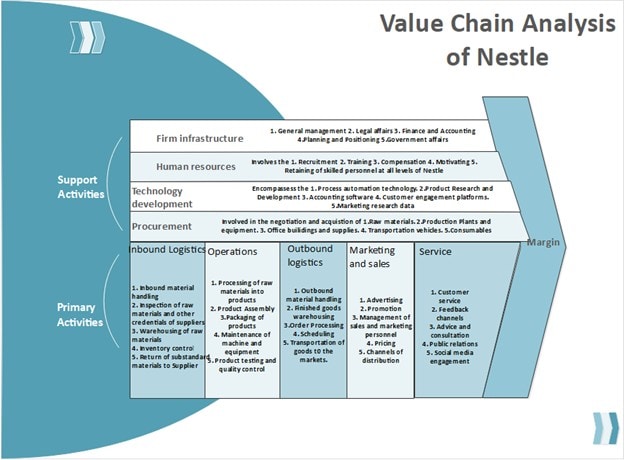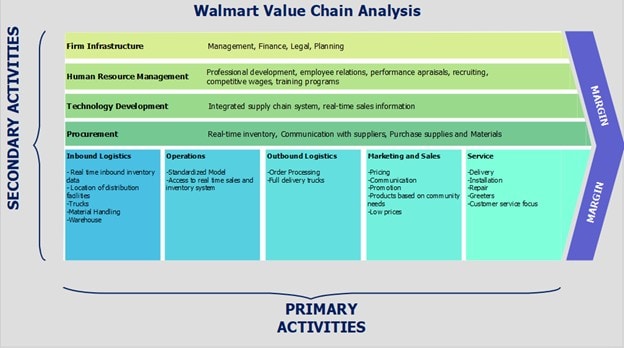In today's business world, understanding and optimizing value chains has become key to organizational success and competitiveness. Value chains are a fundamental concept that helps analyze and understand how value is created, added, and delivered throughout a company’s production process.
This article examines what value chains are, why they’re strategically important, and how they can be analyzed and optimized to gain a competitive advantage. Plus, a collection of free value chain templates you can use to build your diagram.
In this article
Part 1: What Is a Value Chain?
A value chain analysis is a diagram based on the value chain activity model. This model was developed by American strategist Michael Porter, who divided value-adding activities—both inside and outside a company—into two categories: primary activities and support activities.
Primary activities include production, sales, inbound, outbound, and after-sales service. On the other hand, support activities involve human resources, finance, planning, research and development, and procurement. Together, these two types of activities form a company’s value chain.
Part 2: Free Value Chain Templates
Looking to build a value chain diagram? Start with ready-made templates. EdrawMax, a value chain diagram maker, offers a wide range of free templates to help anyone design a transparent, professional value chain. You can easily customize them and export your work in PowerPoint, PDF, or Word formats.
Embark on your dream home journey. Explore the artistry of modern living in these 10 simple two-floor house plans, where simplicity meets elegance. The designs are from Wondershare EdrawMax ’s vibrant Templates Community.
General Value Chain Analysis
First up, here’s a general visual for Porter’s value chain analysis. As you can see, here are the “primary activities” consisting of inbound logistics, operations, marketing, etc. Then, under it are the support activities that consist mainly of procurement. The end goal here is profit. From this template, you can easily adjust it according to your business needs.
Nestle Value Chain Analysis
This real-life value chain analysis of Nestlé outlines how the company delivers value across its operations. It breaks down both support and primary activities, from procurement and product R&D to customer service and market distribution. Each step, like inbound logistics, quality control, and promotion, is mapped out in detail. Together, these elements show how Nestlé maintains efficiency, innovation, and customer satisfaction across its global supply chain.
Walmart Research Value Chain
Here’s another real-life example of a value chain analysis that shows how Walmart creates value through both primary and secondary activities. The chart breaks down key operations such as inbound logistics, marketing, and customer service while also outlining support functions like HR and technology development. Each component is designed to support Walmart’s low-cost strategy, from real-time inventory systems to efficient distribution and competitive employee programs.
Note: In addition to many templates, EdrawMax features AI analysis functionality to increase the accuracy and impact of your data.
Part 3: Create a Value Chain With EdrawMax
With free templates, making a value chain diagram in Edraw is simple. Pick a basic layout, drop in your text and images, and add the finishing touches.
EdrawMax’s Key Features
- All-in-one diagramming software
- Supports over 210 types of diagrams
- Tons of templates and symbols included
- Import & export Visio® files
- Works on Windows, Mac, Linux, Web, iOS, and Android
- Share your work anytime, anywhere
A Step-by-Step Guide
Step 1 Download and Launch EdrawMax
Install EdrawMax on your computer or mobile device. You can also use EdrawMax Online for free, so try it however you like.
Step 2 Choose a Template or Start From Scratch
Go to More > Strategy and Planning > Value Chain Analysis. Every template in EdrawMax is easy to customize. You can tweak the colors, themes, and effects to fit your style.
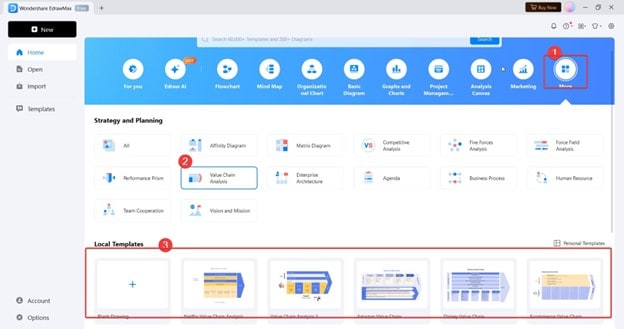
Step 3 Customize Your Diagram
Use the icons and elements from the left-side Library to build out your diagram, or use the floating toolbar when you click on a component. You can also use AI features to help with your analysis.
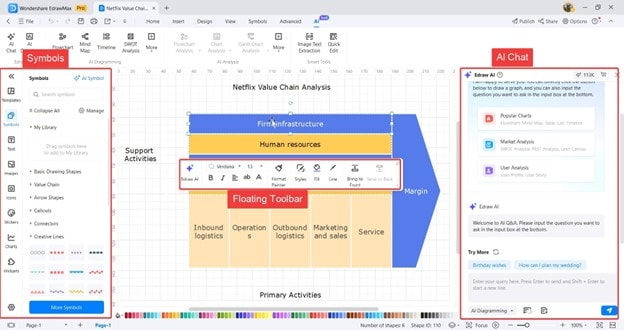
Step 4 Export Your File
When you're done, export your value chain in multiple formats: image, PDF, PowerPoint, Word, SVG, Visio (VSDX), and more.
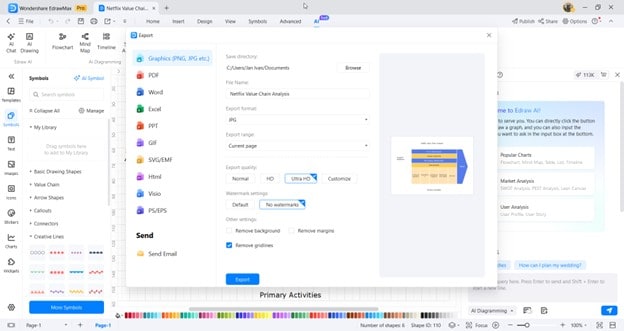
Part 4: What Is the Purpose of Value Chain Analysis?
Before jumping into Wondershare EdrawMax to make your first value chain analysis, you should have a deeper understanding of what the value chain tool is used for. This is essential so that you’ll know what to aim for or do in general with your diagram.
In the different activities companies carry out to create value, not every link in the chain adds value. Only specific ones truly do, and these are what we call the strategic links in a value chain. The competitive edge a company wants to maintain lies in these key strategic areas.
That’s why the primary purposes of a value chain analysis diagram can be broken down into two points:
Identifying the company's core competitiveness.
Using the value chain analysis model, a business can identify its true strengths. This makes it easier to focus on the key areas that matter most. Helping the company strengthen and protect what sets it apart from the competition.
Understanding total value through activity and profit mapping.
A value chain outlines the whole value creation process, including the distinct physical and technical activities the company performs and the resulting benefits. These activities drive product value for customers and guide how the company grows and evolves.
Conclusion
The value chain is a high-level model that explains how a company takes raw materials, adds value through a series of steps, and turns them into finished products. It helps separate the activities that give a business a real competitive advantage from those that waste time and resources.
Focusing on the parts that actually create value can unlock significant gains. A good place to start is by looking at the generic value chain and identifying the steps that matter most for building and keeping an edge.
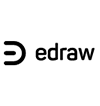



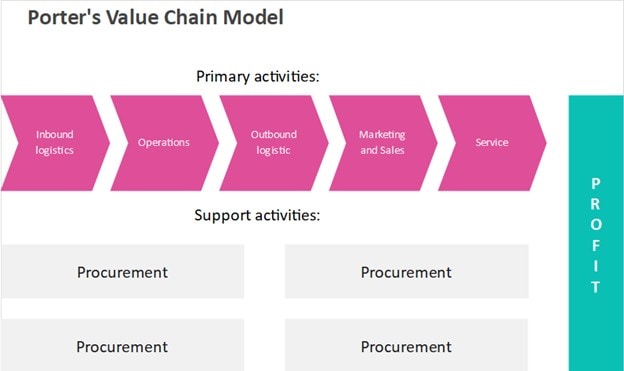
 below.
below.  below.
below. 